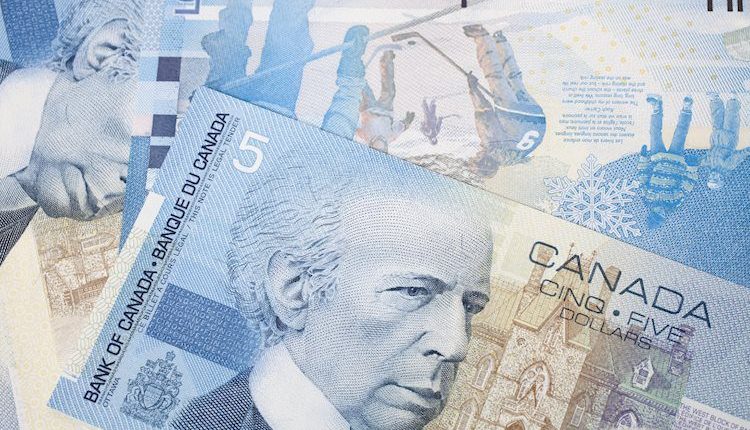- The Canadian Dollar is holding in place against the US Dollar for Thursday.
- Canada’s Ivey PMIs beat expectations, giving the Loonie some much-needed support.
- US labor data also beat forecasts and markets will be turning to the upcoming NFP data drop.
The Canadian Dollar (CAD) is finding some much-needed support in Thursday trading, swapping with the US Dollar (USD) after both currencies strengthened following economic data releases that “beat the street”.
Canada’s seasonally-adjusted Ivey Purchasing Manager Index (PMI) for September came in well above expectations. On the US side, Initial Jobless Claims for the week into September 29th came in better than expected, and next up will be Friday’s US Non-Farm Payrolls figures, which promise to deliver plenty of volatility as FX markets remain firmly focused on US Dollar flows. The US NFP for September is forecast to decline from 187K to 170K.
Daily Digest Market Movers: Canadian Dollar holding in place as US Dollar pressure eases
- USD/CAD cycling Thursday’s opening bids near 1.3743.
- Canadian Ivey PMIs beat the street, bolstering the Loonie.
- US Jobless Claims also jumped forecasts, hampering the CAD’s upside potential for the day.
- Canadian labor figures are due on Friday, and market analysts expect the unemployment rate to hold steady at 5.6% for September.
- Canadian overall net change in employment seen declining from 49.9K to an even 20K.
- US NFP looms ahead, market flows will twist firmly towards the USD side to close out the trading week.
- US wages numbers are broadly expected to tick upwards from 0.2% to 0.3% for September.
- The battle over rate hike expectations isn’t over yet, and FX market participants will be looking ahead to next week’s Federal Open Market Committee (FOMC) minutes, due on Wednesday.
- Crude Oil prices continue to falter as global supply concerns ease back, further sapping upside momentum from the Loonie.
- Canadian Ivey PMIs printed at 53.1 versus the forecast 50.8 and falling back only slightly from the previous 53.5.
- US Initial Jobless Claims came in at 207K against the anticipated 210K. The figure still sees an increase in the number of new jobless claims over the previous week’s 205K (revised upwards from 204K).
Technical Analysis: Canadian Dollar swapping places with the Greenback, USD remains firm
The Canadian Dollar (CAD) is waffling against the US Dollar (USD) for Thursday, trading close to the day’s opening prices near 1.3740. The USD/CAD marked the day’s low in early Thursday trading near 1.3710 before rebounding to a fresh seven-month high of 1.3785, but Greenback’s momentum couldn’t be maintained, and the pair settled back into the middle.
Swing points continue to etch in higher highs for the USD/CAD, but the pair looks set to begin an interim consolidation pattern as investors try to pick a direction moving forward. Recent lows have a technical support zone building out from 1.3700 to 1.3720, with the 100-day Simple Moving Average (SMA) rising to 1.3680.
Canadian Dollar FAQs
The key factors driving the Canadian Dollar (CAD) are the level of interest rates set by the Bank of Canada (BoC), the price of Oil, Canada’s largest export, the health of its economy, inflation and the Trade Balance, which is the difference between the value of Canada’s exports versus its imports. Other factors include market sentiment – whether investors are taking on more risky assets (risk-on) or seeking safe-havens (risk-off) – with risk-on being CAD-positive. As its largest trading partner, the health of the US economy is also a key factor influencing the Canadian Dollar.
The Bank of Canada (BoC) has a significant influence on the Canadian Dollar by setting the level of interest rates that banks can lend to one another. This influences the level of interest rates for everyone. The main goal of the BoC is to maintain inflation at 1-3% by adjusting interest rates up or down. Relatively higher interest rates tend to be positive for the CAD. The Bank of Canada can also use quantitative easing and tightening to influence credit conditions, with the former CAD-negative and the latter CAD-positive.
The price of Oil is a key factor impacting the value of the Canadian Dollar. Petroleum is Canada’s biggest export, so Oil price tends to have an immediate impact on the CAD value. Generally, if Oil price rises CAD also goes up, as aggregate demand for the currency increases. The opposite is the case if the price of Oil falls. Higher Oil prices also tend to result in a greater likelihood of a positive Trade Balance, which is also supportive of the CAD.
While inflation had always traditionally been thought of as a negative factor for a currency since it lowers the value of money, the opposite has actually been the case in modern times with the relaxation of cross-border capital controls. Higher inflation tends to lead central banks to put up interest rates which attracts more capital inflows from global investors seeking a lucrative place to keep their money. This increases demand for the local currency, which in Canada’s case is the Canadian Dollar.
Macroeconomic data releases gauge the health of the economy and can have an impact on the Canadian Dollar. Indicators such as GDP, Manufacturing and Services PMIs, employment, and consumer sentiment surveys can all influence the direction of the CAD. A strong economy is good for the Canadian Dollar. Not only does it attract more foreign investment but it may encourage the Bank of Canada to put up interest rates, leading to a stronger currency. If economic data is weak, however, the CAD is likely to fall.
Read the full article here

